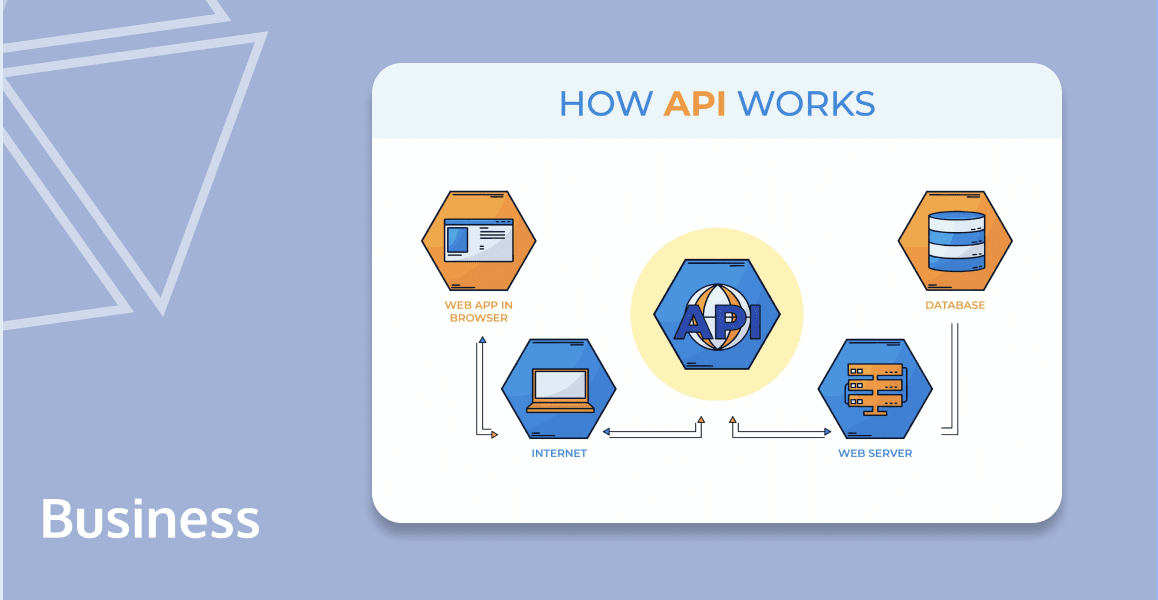
For businesses striving to stay competitive in the modern marketplace, knowing what is API integration is essential, as it can facilitate smoother workflows and reduce manual processes by connecting different software systems and services. It also exchanges data and functionalities between disparate applications. If you are interested in API, you come to the right place as we will introduce its basics, functionality, benefits to businesses, and some common use cases. Read on to learn more!
Understanding the API and API Integration
In the digital age, APIs (Application Programming Interfaces) have become the cornerstone of software development and integration. They act as the bridge that allows different software systems to communicate and work together efficiently.
For one thing, APIs promote the exchange of data and functionality between applications, making them a vital tool for developers. They simplify the development process by providing a set of rules and protocols to follow, which in turn, speeds up the integration of new features and services. This interoperability is important for creating complex systems that can evolve over time without the need for constant redevelopment.
For another, API integration connects various systems and applications to allow them to operate as a cohesive unit. This process is key to creating a network of services that can share data in real time, leading to increased efficiency and productivity. For businesses, API integration means being able to offer more comprehensive services to their customers, as they can leverage external platforms and technologies quickly and effectively.

How API Integration Works?
To help businesses achieve transformation, you need to know how API integration works. The process begins with identifying the desired functionalities or data that need to be shared between systems. Developers then implement APIs that expose these functionalities in a standardized format, helping other applications to access and utilize them.
Integration platforms or middleware are often employed to streamline the connection between APIs and applications. These platforms provide tools for data mapping, transformation, and orchestration, achieving smooth communication between systems.
Once the integration is established, data flows freely between applications in real time. This enables businesses to automate processes, synchronize data across systems, and deliver enhanced services to users.
Benefits of API Integration
API integration offers a range of benefits that can transform businesses and drive growth. These benefits include:
- Streamlined Workflows: API integration automates data transfer and communication between applications, eliminating the need for manual data entry and reducing the risk of errors. This simplifies business processes, improves efficiency, and frees up employees to focus on more strategic tasks.
- Enhanced Productivity: With API integration, employees can access the information they need from multiple systems within a single interface, and that will boost productivity and collaboration.
- Improved User Experience: API integration significantly enhances user experience by seamlessly incorporating diverse functionalities into a single interface, eliminating the need for multiple applications. For instance, integrating a Voice Chat API into a gaming app allows players to communicate in real time without leaving the game or using a separate app for voice communication.
- Competitive Advantage: Businesses that effectively implement API integration can gain a competitive edge by quickly adapting to market changes, launching new products or services, and integrating with emerging technologies. This agility and flexibility can be a competitive edge in the market.
- Scalability and Flexibility: Businesses use API integration to easily add or remove applications and services as their needs evolve. There is no need for extensive development or system overhauls. This scalability and flexibility are crucial for companies looking to grow and adapt to changing market conditions.
Common Use Cases of API Integration
API integration finds widespread application across industries, transforming business processes and driving innovation. Here are some common use cases where API integration plays a pivotal role:
- E-commerce and Payment Processing: E-commerce businesses often integrate payment processing APIs, such as Stripe or PayPal, to facilitate secure online transactions. This allows customers to complete purchases without leaving the merchant's website or app.
- Customer Relationship Management (CRM): Businesses integrate their CRM systems, like Salesforce or HubSpot, with other applications like email marketing platforms, project management tools, and social media channels. This enables them to centralize customer data and automate lead generation, nurturing, and retention processes.
- Enterprise Resource Planning (ERP): API integration connects ERP systems with other business applications, such as inventory management, accounting, and HR software. This ensures real-time data synchronization and streamlined operations across the organization.
- Logistics and Supply Chain Management: Logistics companies integrate their systems with those of their partners, including shipping carriers, to automate order tracking, inventory updates, and delivery notifications. This improves supply chain visibility and customer experience.
- Higher Engagement in Social Media: Some APIs can drive higher engagement. Chat API is such a service, bringing better engagement in social media. For instance, integrating a Chat API into a social media app not only facilitates immediate interaction among users but also encourages the sharing of content within private messages, thereby increasing user retention and creating a more dynamic and interactive platform environment.
Conclusion
APIs and their integration offer a means to enhance efficiency, data accessibility, and user experience across various platforms. By enabling seamless communication between different software systems, API integration facilitates a wide range of functionalities, from real-time chat to payment processing.
As businesses move forward in the digital age, smartly using API integration is key. It will help your business run smoother, grow faster, and stay ahead in a world where everything is connected.
FAQs
What Are the Differences between API Integration and API Development?
API integration and API development are distinct processes. API integration means connecting an application to an existing API to leverage its functionality, while API development means creating a new API from scratch to expose specific data or services.
If you have any questions or need assistance, our support team is always ready to help. Please feel free to Contact Us or join us in Telegram.
How Can Businesses Leverage API Integration to Gain a Competitive Edge?
Businesses can leverage API integration to gain a competitive edge by streamlining operations, enhancing customer experiences, and enabling innovative services. API integration allows seamless data exchange and interoperability between different software systems, which can improve efficiency, reduce costs, and unlock new business opportunities. By integrating API, businesses can connect with partners, suppliers, and customers more effectively, creating a more cohesive and responsive enterprise ecosystem. Additionally, API integration can enable rapid development of new features and services, and that can help businesses stay ahead of the competition.
What Security Measures Should Be Implemented to Protect API Integration from Vulnerabilities?
To protect API integration from vulnerabilities, businesses can implement security measures like authentication, encryption, rate limiting, input validation, and regular security audits. These measures can help secure data transmission, prevent unauthorized access, and mitigate potential vulnerabilities.


